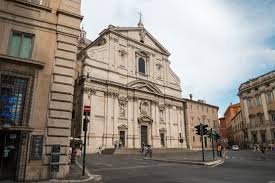AP Art History Review of Individual Pieces with Pictures
1/257
There's no tags or description
Looks like no tags are added yet.
Name | Mastery | Learn | Test | Matching | Spaced |
|---|
No study sessions yet.
258 Terms
Apollo 11 Stones.
Paleolithic. Namibia.25,500-25,300 B.C.E. Charcoal, Stone
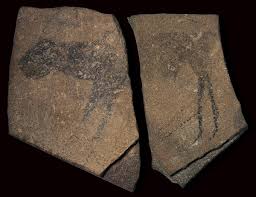
Great Hall of the Bulls.
Paleolithic Europe Lascaux,France. 15,000-13,000 B.C.E. . Rock painting
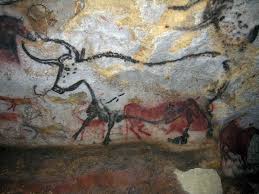
Carmelid Sacrum in the Shape of a Canine.
Paleolithic. Tequixquiac, central Mexico. 14,000-7000 BCE. Bone.
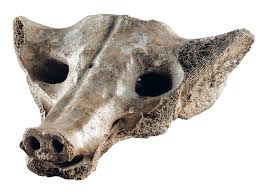
Running horned woman
Neolithic Tassili N’Ajjer, Algeria. 6000-4000 BCE. Pigment on Rock.
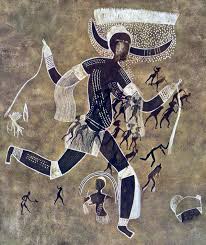
Beaker with Ibex Motifs
Neolithic. Susa, Iran. 4200-3500 BCE. Painted Terracotta.
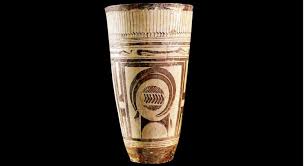
Anthropomorphic Stele
Arabian Peninsula. Fourth millennium BCE. Sandstone
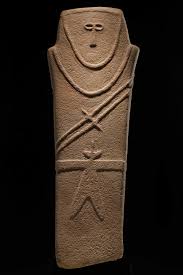
Jade Cong
Liangshu, China. 3300-2200 BCE. Carved Jade.
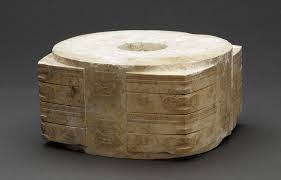
Stone Henge
Wiltshire, UK. Neolithic Europe. C. 2500-1600 BCE. Sandstone
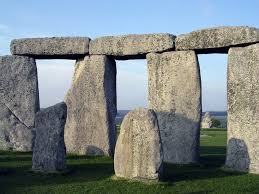
The Ambum Stone
Neolithic. Ambum Valley, Enga Province, Papa New Guinea. 1500 BCE. Greywacke
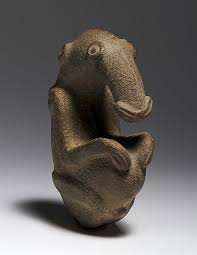
Tlatico female figurine
Neolithic. Central Mexico, site of Tlatico. 1200-900 BCE. Ceramic
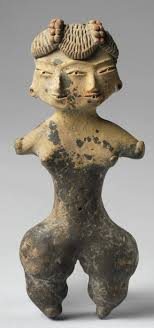
Terracotta Fragment. Lapita
Neolithic. Solomon Islands, Reef Islands. 1000 BCE. Terra Cotta
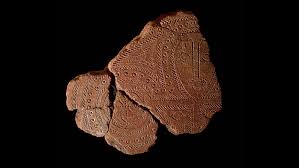
White Temple and Its Ziggurat
Uruk, (Modern Warka Iraq). Sumerian. C. 3500-3000 BCE. Mudbrick
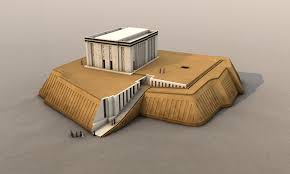
Statues of Votive Figures
Sumerian. c. 2700 BCE Gypsum inlaid with shell and black limestone

Standard of Ur
Sumerian. c. 2600-2400 BCE. Wood inlaid with shell, lapis lazuli, and red limestone.
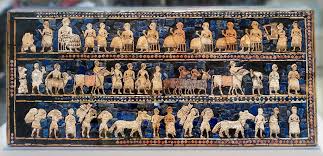
The Stele of Hammurabi
Babylonian. c. 1792-1750 BCE. Basalt, inscribed with laws and regulations.
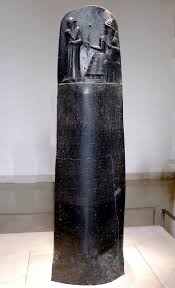
Lamassu
Neo-Assyrian. c. 720-705 BCE. Alabaster.
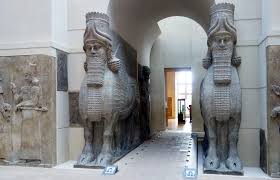
Audience Hall of Darius and Xerxes
Persepolis, Iran. Persian. c.520-465 BCE. Limestone.
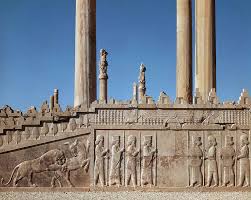
Palette of King Narmer
Predynastic Egypt. c. 3000-2920 BCE. Greywacke
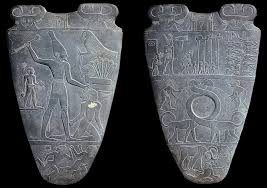
Seated Scribe
Saqqara, Egypt. Old Kingdom, Fourth Dynasty. c. 2620-2500 BCE. Painted limestone

Great Pyramids (Menkaura, Khafre, Khufu) and Great Sphinx.
Giza, Egypt. Old Kingdom, Fourth Dynasty. c. 2550-2490 BCE. Cut limestone.
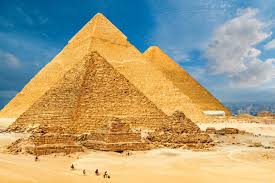
King Menkaura and queen.
Old Kingdom, Fourth Dynasty. c. 2490-2472 BCE Greywacke
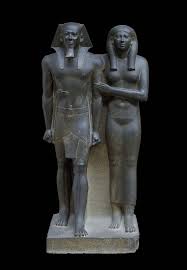
Temple of Amun-Ra and Hypostyle Hall
Luxor, Egypt. New Kingdom. 18th and 19th Dynasties. c. Temple1550; Hall1070 BCE. Sandstone and Mudbrick.
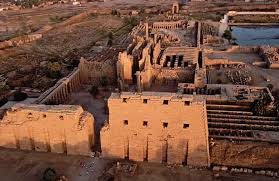
Mortuary Temple of Hatshepsut
Luxor, Egypt. New Kingdom. 18th Dynasty. c. 1473-1458 BCE. Sandstone, partially carved into a rock cliff, and red granite.
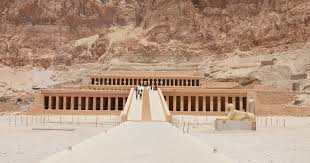
Last judgement of Hu-Nefer, from his tomb
New Kingdom. 19th Dynasty. c. 1275 BCE. Painted papyrus.
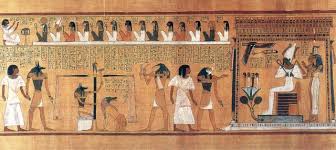
Tutankhamun’s tomb, innermost coffin.
New Kingdom. 18th Dynasty. c. 1323 BCE. Gold with inlay of enamel and semiprecious stones.

Akhenaton, Nefertiti, and three daughters
New Kingdom. 18th Dynasty. c. 1353-1335 BCE. Limestone relief depicting the royal family in an intimate setting.
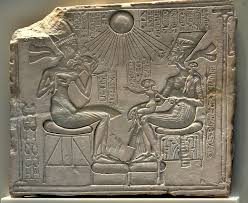
Anavysos Kouros
Archaic Greek. c. 530 BCE. Marble with remnants of paint.
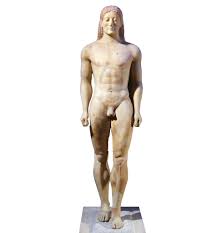
Peplos Kore from the Acropolis
Archaic Greek. c. 530 BCE. Marble, painted details
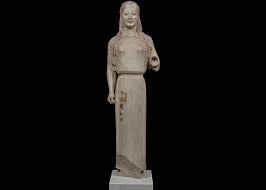
Niobides Krater
Anonymous vase painter (Niobid painter). Classical Greece. c. 460-450 BCE. Clay, red figure technique (white highlights)
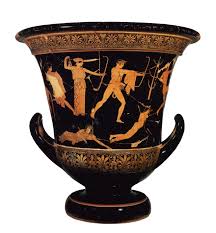
Doryphoros (Spear Bearer)
Polykleitos. Original 450 - 440 BCE. Roman copy (marble) of Greek original (bronze).

Acropolis
Athens, Greece. Iktinos and Kallikrates. c. 447-410 BCE. Marble.
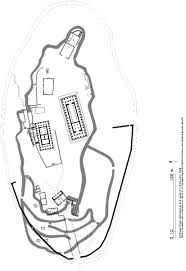
Parthenon
Classical Greece
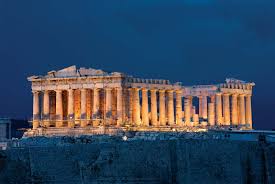
Helios, Horses, and Dionysus
Classical Greece

Temple of Athena Nike
Classical Greece
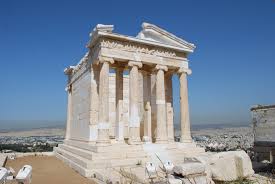
Plaque of Ergastines
Classical Greece
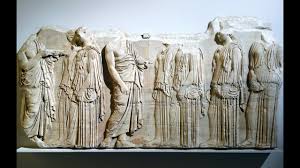
Nike adjusting her sandal
Classical Greece
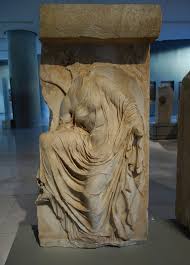
Grave stele of Hegeso
Attributed to Kallimachos. c. 410 BCE. Marble and Paint
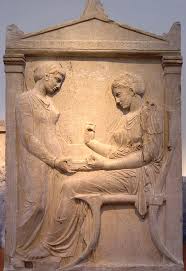
Winged Victory of Samothrace
Hellenistic Greek. c. 190 BCE Marble
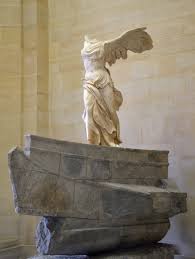
Seated Boxer
Hellenistic Greek. c. 100 BCE Bronze.
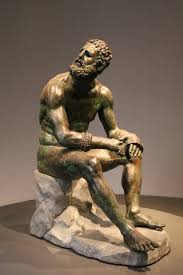
Great Altar of Zeus and Athena at Pergamon
Asia Minor (present-day Turkey), Hellenistic Greek. c. 175 BCE Marble (architecture and sculpture)
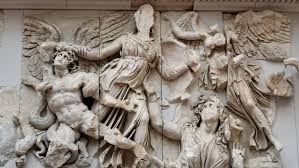
Sarcophagus of the Spouses
Etruscan. c. 520 BCE. Terracotta.
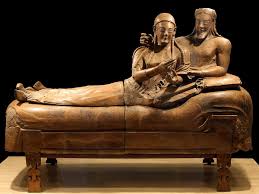
Temple of Minerva (Veii, near Rome, Italy) and sculpture of Apollo
Etruscan. Master sculptor Vulca. c. 510-500 BCE. Original temple of wood, mud brick, or tufa (volcanic rock); terra cotta sculpture.
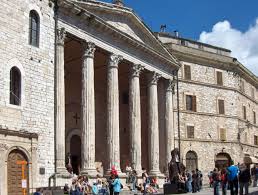
Tomb of the Triclinium
Tarquinia, Italy. Etruscan. c. 480-470 BCE. Tufa and Fresco
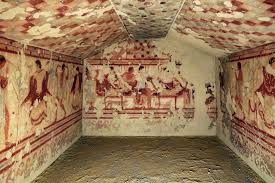
House of the Vettii including Atrium and Frescos
Pompeii, Italy. Imperial Roman. c. second century BCE; rebuilt c. 62-79 CE. Cut stone and fresco.
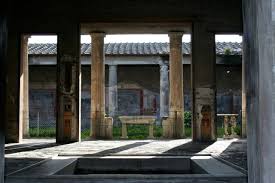
Alexander Mosaic from the House Faun, Pompeii
Roman Republic. c. 100 BCE. Mosaic.
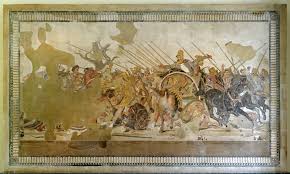
Head of a Roman Patrician
Republican Roman. c. 75-50 BCE. Marble.
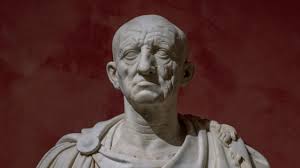
Augustus of Prima Porta
Imperial Roman. Early first century CE. Marble.
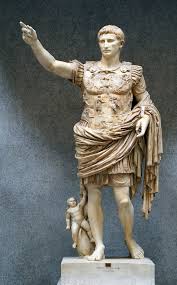
Colosseum (Flavian Amphitheater)
Rome, Italy. Imperial Roman. 70-80 CE. Stone and concrete.
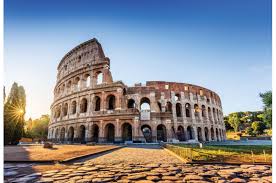
Ludovisi Battle Sarcophagus
Late Imperial Rome. c. 250 CE Marble.
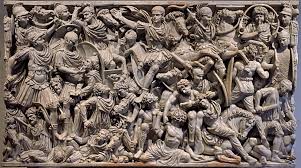
Forum of Trajan
Rome, Italy. Apollodorus of Damascus. Forum and markets: 106-112 CE; column completed 113 CE. Brick and concrete (architecture); marble (column).

Pantheon
Imperial Roman. 118-125 CE. Concrete with stone facing.
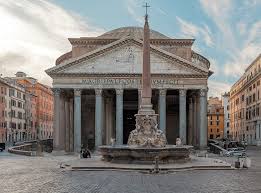
Catacomb of Priscilla
Rome, Italy. Late Antique Europe. c. 200-400 CE. Excavated tufa and fresco.
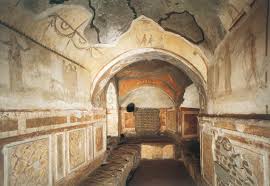
Santa Sabina
Rome, Italy. Late Antique Europe. c. 422-432 CE. Brick and stone, wooden roof.
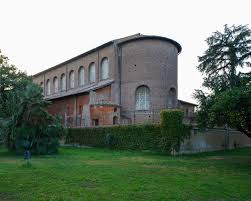
San Vitale
Ravenna, Italy. Early Byzantine Europe. c. 526-547 CE. Brick, marble, and stone veneer; mosaic.
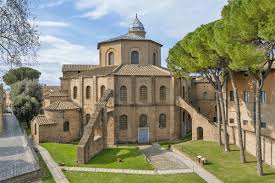
Hagia Sophia
Constantinople (Istanbul). Anthemius of Tralles and Isidorus of Miletus. Byzantine. 532-537 CE. Brick and ceramic elements with stone and mosaic veneer.
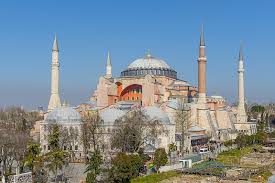
Rebecca and Eliezer at the Well and Jacob Wrestling the Angel, Vienna Genesis
Early Byzantine Europe. Early sixth century CE Illuminated manuscript (tempera, gold, and silver on purple vellum).
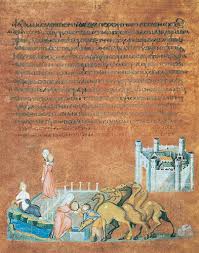
Virgin (Theotokos) and Child between Saints Theodore and George
Early Byzantine Europe. Sixth or early seventh century CE Encaustic on wood.
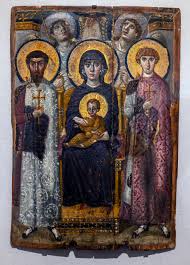
Merovingian looped fibulae
Early medieval Europe. Mid-sixth century CE. Silver gilt worked in filigree, with inlays of garnets and other stones
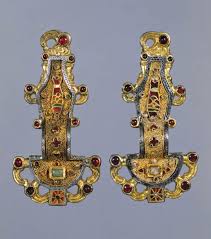
Lindisfarne Gospels: St. Matthew, Cross carpet page; St Luke Portrait page; St. Luke incipit page
Early medieval (Hiberno Saxon) Europe. c. 700 CE. Illuminated manuscript (ink, pigments, and gold on vellum).
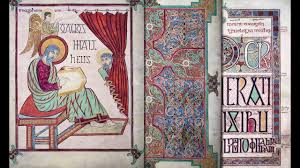
Church of Sainte-Foy
Conques, France. Romanesque Europe. Church: c. 1050-1130 CE; Reliquary of Saint Foy: ninth century CE, with later additions. Stone (architecture); stone and paint (tympanum); gold, silver, gemstones, and enamel over wood.
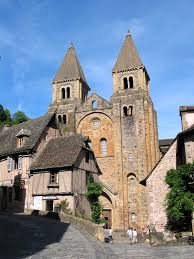
The Last Judgement
1107-1125 CE. Romanesque. Painted Stone.
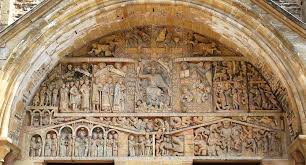
Reliquary of Saint-Foy
800 CE. Romanesque. Gold, Silver, Gemstone, enamel over wood.
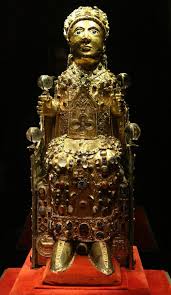
Bayeux Tapestry - Calvary attack, First Meal
Romanesque Europe (English or Norman). c. 1066-1080 CE. Embroidery on linen.
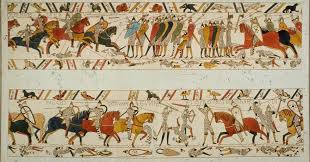
Chartres Cathedral
Chartres, France. Gothic Europe. Original construction. c. 1145-1155 CE; reconstructed c. 1194-1220 CE. Limestone, stained glass.
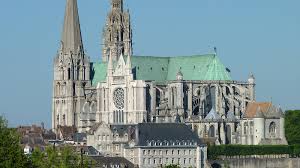
Dedication Page with Blanche of Castile and King Louis IX of France, Scenes from the Apocalypse from Bible moralisees
Gothic Europe. c. 1225-1245 CE Illuminated manuscript (ink, tempera, and gold leaf on vellum).
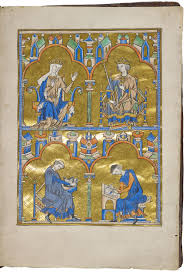
Great Portals of the West Facade
Gothic
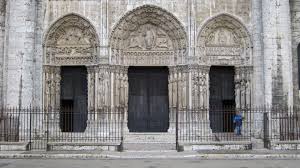
Notre Dame de la Belle Verriere
Gothic
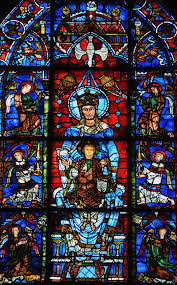
Golden Haggadah (The Plagues of Egypt, Scenes of Liberation, and Preparation for Passover)
Late medieval Spain. c. 1320 CE. Illuminated manuscript (pigments and gold leaf on vellum)

Rottgen Pieta
Late Medieval Europe. c. 1300-1325 CE. Painted Wood
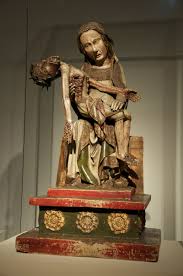
Arena (Scrovegni) Chapel, including Lamentation
Padua, Italy. Unknown architect; Giotto di Bondone (artist). Chapel: c. 1303 CE; Fresco: c. 1305. Brick(architecture) and fresco.
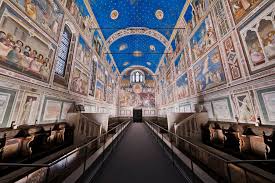
The Kaaba
Mecca, Saudi Arabia. Islamic. Pre-Islamic monument; rededicated by Muhammad in 631-632 CE; multiple renovations. Granite masonry, covered with silk curtain and calligraphy in gold and silver-wrapped thread.

Dome of the Rock
Jerusalem. Islamic, Umayyad. 691-692 CE. with multiple renovations. Stone masonry and wooden roof decorated with glazed ceramic tile, mosaics, and gilt aluminum and bronze dome.
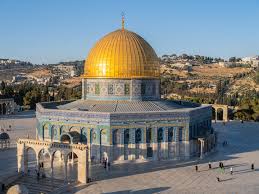
Great Mosque (Masjid-e Jameh Isfahan, or Friday Mosque)
Isfahan, Iran. Islamic, Persian: Seljuk, Il-Khanid, Timurid and Safavid Dynasties. c. 700 CE: additions and restorations in the 14th, 18th, and 20th centuries CE. Stone, brick, wood, plaster, and glazed ceramic tile.
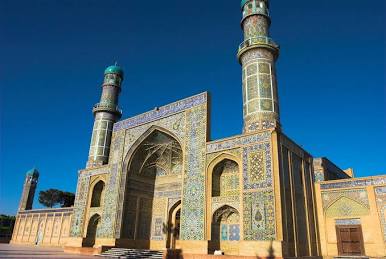
Great Mosque of Cordoba
Cordoba, Spain. Umayyad. Begun c. 785-786 CE. Stone masonry.

Alhambra
Granada, Spain. Nasrid Dynasty. 1354-1391 CE. Whitewashed adobe stucco, wood, tile, paint, and gilding.
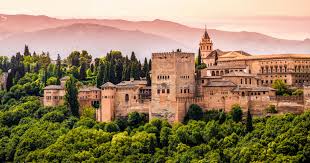
Great Mosque of Djenne
Mali. Founded c. 1200 CE; rebuilt 1906-1907. Adobe.
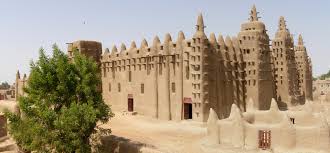
Taj Mahal
Mausoleum in Agra, India, built by Mughal Emperor Shah Jahan in memory of his wife Mumtaz Mahal; known for its stunning white marble architecture.
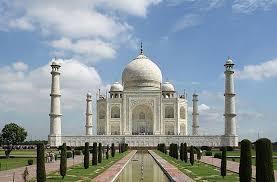
Mosque of Selim II.
Edirne, Turkey. Sinan (architect). 1568-1575 CE. Brick and stone.
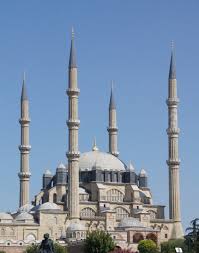
Pyxis of al-Mughira
Umayyad. c. 968 CE. Ivory.

The Ardabil Carpet
Maqsud of Kashan. 1539-1540 CE. Silk and Wool
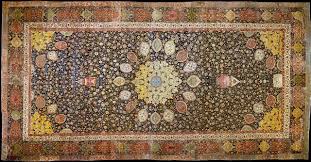
Basin (Baptistere de St. Louis).
Muhammad ibn al-Zian. c. 1320-1340 CE. Brass inlaid with gold and silver

Annunciation Triptych (Merode Altarpiece)
North Renaissance. Workshop of Robert Campin. 1427-1432 CE. Oil on wood.
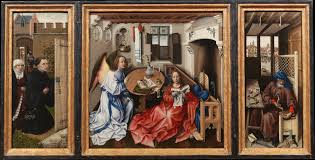
The Arnolfini Portrait
North Renaissance. Jan van Eyck. c. 1434 CE. Oil on wood.
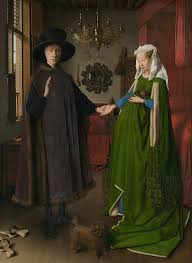
Adam and Eve
North Renaissance. Albrecht Durer. 1504 CE. Engraving.
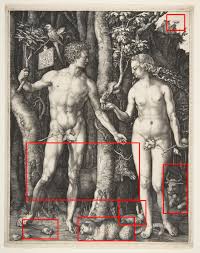
Hunters in the Snow
North Renaissance. Pieter Bruegel the Elder. 1565 CE. Oil on wood.
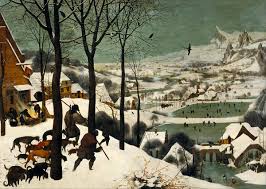
Isenheim altarpiece
North Renaissance. Matthias Grunewalk. c. 1512-1516 CE. Oil on wood.
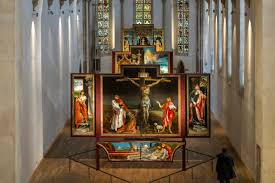
Pazzi Chapel
Italian Renaissance. Basilica di Santa Croce. Florence, Italy. Fillipo Brunelleschi (architect), c.1429-1461 CE. Masonry.
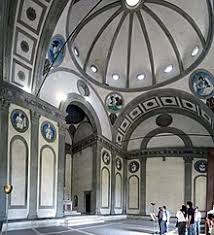
David
Italian Renaissance. Donatello. c. 1440-1460 CE. Bronze
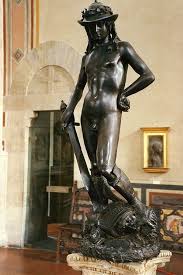
Birth of Venus
Italian Renaissance. Sandro Botticelli. c. 1484-1486 CE. Tempera on canvas
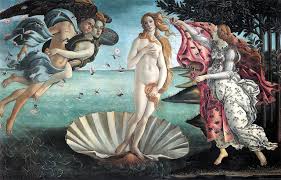
Palazzo Ruccellai
Italian Renaissance. Florence, Italy. Leon Battista Alberti (architect). c. 1450 CE. Stone, masonry.
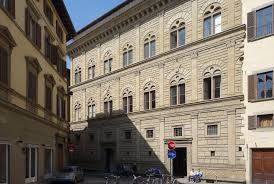
Madonna and Child with Two Angels
Italian Renaissance. Fra Filippo Lippi. c. 1465 CE. Tempera on wood.
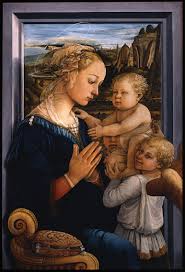
Sistine Chapel ceiling and altar wall frescoes
High Renaissance. Vatican City, Italy. Michaelangelo. Ceiling frescoes: c. 1508-1512 CE; altar frescoes: c. 1536-1541 CE. Fresco
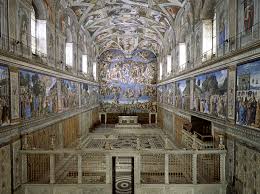
The Delphic Sibyl
High Renaissance. Michael Angelo
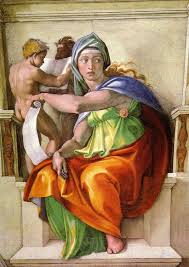
The Flood
High Renaissance. Michael Angelo
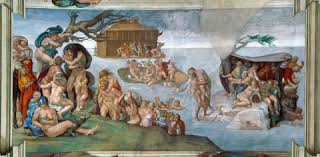
Sistine Chapel
High Renaissance. Michael Angelo
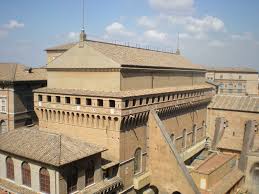
School of Athens
High Renaissance. Raphael. 1509-1511 CE. Fresco.
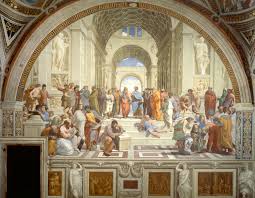
Last Supper
High Renaissance. Leonardo da Vinci. 1494-1498 CE. Oil and Tempera.
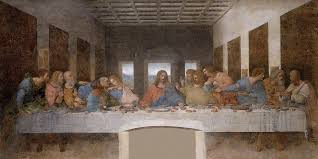
Venus of Urbino
High Renaissance. Titian. c. 1538 CE. Oil on Canvas.

Entombment of Christ
Mannerism. Jacopo da Pontormo. 1525-1528 CE. Oil on Wood.
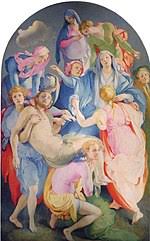
II Gesu, including Triumph of the Name of Jesus ceiling fresco
Baroque. Rome, Italy. Giacomo de Vignola, plan (architect); Giacomo della porta, facade(architect); Giovanni Battista Gaulli, ceiling fresco (artist). Church: 16th century CE; façade: 1568-1584 CE; fresco and stucco figures:1676-1679CE. Brick, marble, fresco, and stucco.
